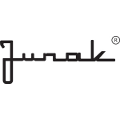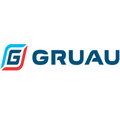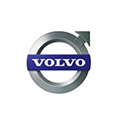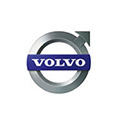03_18 How to design an optimal after-sales network for the automotive industry
In light of growing competition in the automotive market, customer experience is becoming a key factor in the car sales process. Therefore, car importers and dealership networks are looking for solutions to increase customer satisfaction and thus improve their own financial performance. One of the ways to achieve this goal would be to design an after-sales network that will best suit their customers’ needs. In order to set up a perfect network, an importer should try to answer some crucial questions:
- How many garages do I need to ensure the required availability of services for my customers?
- What should the format of these outlets be: small or large, and what does that really mean?
- What will be the target profitability of my network?
- Should I allow servicing of other car brands? If so, to what extent, so that I can profit from it?
- Where should my garages be located?
In order to find the answers to these questions, existing possibilities and restrictions should also be taken into account. The most important ones include:
-
How many of my brand’s cars will there be on Polish roads in the future?
This number will determine the potential size of the market in the future. It is worth asking yourself if sales forecasts are the best source of such information. It is also worthwhile to consider how this figure could be affected by the import of used cars. -
What will be the age structure of cars in the future?
Statistics show that customer loyalty to authorised repairers decreases significantly over time. It is advisable to assume the maximum age of cars, above which they no longer increase the size of the market available to importers. -
How will the share of services provided by authorised repairers evolve in relation to other market players?
The size of the market gained by an importer will depend on the loyalty of customers and their inclination to use the services of authorised repairers. This loyalty is not only determined by the age, but also by the growing complexity of the cars manufactured today and the available sources of financing for after-sales services. -
What will the car ownership structure look like: large, medium-sized and small fleets, micro-enterprises and individual customers?
The ownership structure is what largely determines the readiness to use authorised repairer services. Understanding the changes in this structure makes it possible to correctly dimension the market in the future and appropriately adapt not only the network itself, but also the products it offers. -
What will be the residual value of cars in the future?
The decreasing residual value of cars, coupled with changes in the insurance market, makes it harder to finance after-sales services, especially in the case of older cars. As a result, the age of the cars that can be serviced by authorised repairers is further decreased.
By analysing the factors presented above, importers or dealership networks can determine the size of the after-sales service market available to them. However, in order to answer the question of where and what the size of garages should be, some further challenges need to be tackled:
-
What determines the number of repairs and/or part sales in a given geographical area?
How do you obtain credible data on the number of sales in a given area? Data from authorised repairers, the Central Statistical Office or the police may be inaccurate. There is no reliable source of such data in Poland. The key to success is to skilfully combine partial data and arrive at the right conclusions. - When considering locations for repair facilities, it is worth striking a balance between customer availability, logistics costs and resilience to demand fluctuations. Demand fluctuations should be understood as both the ability to meet greater demand and to survive the periods of lesser demand for after-sales services/products.
- Ultimately, it is advisable to analyse the profitability of individual authorised repairer formats to determine the volume of repairs they should perform in order to ensure the required profitability levels.
Only by answering these questions, with the aid of state-of-the-art modelling tools, will it be possible to design an optimal after-sales network from the perspective of current and future market requirements. Consequently, the successful design of an after-sales network, requires the combined efforts of industry, financial and network-dimensioning experts.
Autor: Anna Szczeblewska , Dyrektor PwC Polska ; Piotr Michalczyk , Partner PwC Polska

























































